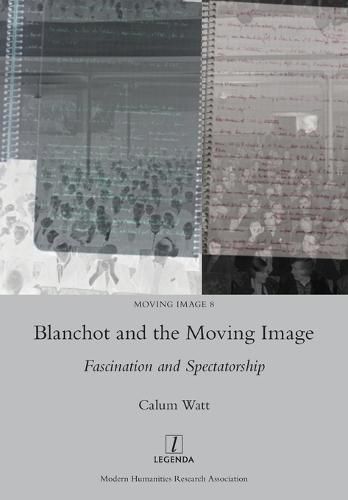Readings Newsletter
Become a Readings Member to make your shopping experience even easier.
Sign in or sign up for free!
You’re not far away from qualifying for FREE standard shipping within Australia
You’ve qualified for FREE standard shipping within Australia
The cart is loading…






This title is printed to order. This book may have been self-published. If so, we cannot guarantee the quality of the content. In the main most books will have gone through the editing process however some may not. We therefore suggest that you be aware of this before ordering this book. If in doubt check either the author or publisher’s details as we are unable to accept any returns unless they are faulty. Please contact us if you have any questions.
The French writer and philosopher Maurice Blanchot (1907-2003) was a notoriously reclusive figure who wrote that his life was entirely devoted to literature. Why then have filmmakers and writers on film found so much inspiration in Blanchot’s work? Blanchot and the Moving Image explores a constellation of connections between Blanchot, film and film theory and draws lines of intellectual influence to show how Blanchot’s thinking of literature find its way by a kind of displacement into contemporary philosophical approaches to cinema. Three case studies examining individual films - by Jean-Luc Godard, Bela Tarr and Gaspar Noe - draw out how Blanchot’s complex notions of fascination and image can contribute to theories of spectatorship. The first book-length treatment of this theme, Blanchot and the Moving Image thus demonstrates the overlooked importance of Blanchot’s work for understanding contemporary film and film theory.
Calum Watt gained his PhD at King’s College London and is a Marie Curie Fellow at Universite Sorbonne Nouvelle, Paris 3.
$9.00 standard shipping within Australia
FREE standard shipping within Australia for orders over $100.00
Express & International shipping calculated at checkout
This title is printed to order. This book may have been self-published. If so, we cannot guarantee the quality of the content. In the main most books will have gone through the editing process however some may not. We therefore suggest that you be aware of this before ordering this book. If in doubt check either the author or publisher’s details as we are unable to accept any returns unless they are faulty. Please contact us if you have any questions.
The French writer and philosopher Maurice Blanchot (1907-2003) was a notoriously reclusive figure who wrote that his life was entirely devoted to literature. Why then have filmmakers and writers on film found so much inspiration in Blanchot’s work? Blanchot and the Moving Image explores a constellation of connections between Blanchot, film and film theory and draws lines of intellectual influence to show how Blanchot’s thinking of literature find its way by a kind of displacement into contemporary philosophical approaches to cinema. Three case studies examining individual films - by Jean-Luc Godard, Bela Tarr and Gaspar Noe - draw out how Blanchot’s complex notions of fascination and image can contribute to theories of spectatorship. The first book-length treatment of this theme, Blanchot and the Moving Image thus demonstrates the overlooked importance of Blanchot’s work for understanding contemporary film and film theory.
Calum Watt gained his PhD at King’s College London and is a Marie Curie Fellow at Universite Sorbonne Nouvelle, Paris 3.